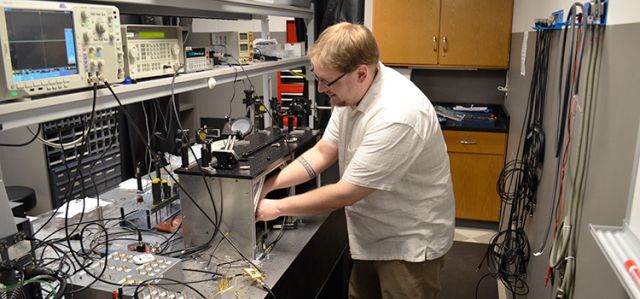Effects of Spatial Modes on Ladar Vibration Signature Estimation
Document Type
Article
Publication Date
2007
Publication Source
Applied Optics
Abstract
Ladar-based vibrometry has been shown to be a powerful technique in enabling the plant identification of machines. Rather than sensing the geometric shape of a target laser vibrometers sense motions of the target induced by moving parts within the system. Since the target need not be spatially resolved, vibration can be sensed reliably and provide positive identification at ranges beyond the imaging limits of the aperture. However, as the range of observation increases, the diffraction-limited beam size on the target increases as well, and may encompass multiple vibrational modes on the target's surface. As a result, vibration estimates formed from large laser footprints illuminating multiple modes on a vibrating target will experience a degradation. This degradation is manifest as a spatial low-pass filtering effect: high-order mode shapes, associated with high-frequency vibrations, will be averaged out while low-frequency vibrations will be affected less. A model to predict this phenomenology is proposed for both pulse-pair and cw vibrometry systems. The cw model is compared to results obtained using an off-the-shelf laser vibrometry system.
Inclusive pages
7365-7373
ISBN/ISSN
1559-128X
Copyright
Copyright © 2007, Optical Society of America
Publisher
Optical Society of America
Volume
46
Issue
30
Peer Reviewed
yes
eCommons Citation
Jameson, Douglas; Dierking, Matthew P.; and Duncan, Bradley D., "Effects of Spatial Modes on Ladar Vibration Signature Estimation" (2007). Electro-Optics and Photonics Faculty Publications. 28.
https://ecommons.udayton.edu/eop_fac_pub/28
COinS



